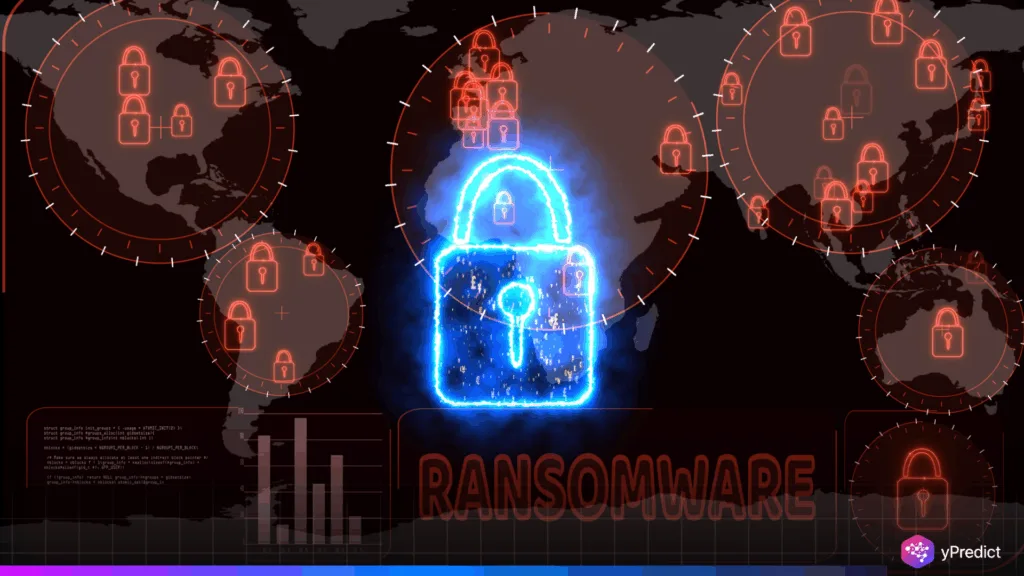
New insights into the Embargo Ransomware group have reignited discussions of the evolving sophistication of cybercrime and the need for some form of global policy response. An astonishing picture of a red bag full of cash wrapped in $100 bills serves as an essential representation of the $34 million in cryptocurrency associated with the group, underscoring the magnitude of the threat. ESET Researchers recently published a report (June 2025) demonstrating that this group leverages Rust-based tools to circumvent security systems, as well as exhibit advanced double-extortion methods that make recovery nearly impossible for victims.
Advanced Tactics and Rust-Based Operations
With the emergence of new Rust-based tools, Embargo Ransomware has quickly become one of the most serious ransomware threats. Experts characterize these attacks as organized, in that they incorporate encryption and data theft in coordinated attacks, thereby giving the threat actor leverage over the target to ensure they will pay. As a result of these types of methods, there is a greater opportunity for double extortion based on the victim’s employment of data recovery methods.
Investigators illustrate that the operations utilize planned campaigns against targets such as particular businesses and institutions to exploit the high-value assets they contain. The magnitude of the $34 million they have traced signifies the reach of the group. The forensics team inspected their codebase and determined that the group continuously updates it, which suggests their capability of avoidance and detection, which speaks to their sophistication as a group. ESET researchers warn that these techniques are becoming more automated, potentially increasing attack frequency.
Dormant Wallets Indicate Operational Discipline
Beyond their aggressive tactics, Embargo Ransomware’s financial management has drawn particular attention. Related discussions on X in mid-2025 highlighted that $18.8 million of the group’s holdings remain locked in dormant wallets. This mirrors patterns found in a 2023 Chainalysis report, which concluded that over 60% of ransomware proceeds are typically held in cold storage to evade tracking. Analysts suggest that keeping funds inactive is a deliberate strategy to reduce exposure during heightened law enforcement activity. These dormant wallets, however, also raise questions about the timing of potential fund movements and whether such reserves are earmarked for reinvestment into more advanced attack infrastructure.
UK’s Proposed Ban Signals Policy Shift
In a direct challenge to groups like Embargo, the UK government on July 21, 2025, announced a proposed ban on ransom payments. This proposal has received overwhelming support from the public ability to engage government officials, with 75% of respondents to this informal consultation supporting the move. Officials view the proposed ban primarily as a deterrent, seeking to remove the monetary reward that motivates criminal groups.
This proposal epitomizes a watershed moment in cybercrime legislation and enforcement policy globally because it reveals a growing acceptance that governments may adopt a more active policy response to cybercrime. While some voices in industry have warned of unintended consequences regarding pushing payments further underground, supporters of non-payment tell us that failing to eliminate ransom payments from the supply side is not only necessary but critical to crime reduction costs in the long term.
Escalating Cybercrime Costs Drive Urgency
As ransomware inflicts mounting financial damage and drives annual cybercrime costs into the millions, criminals value Embargo Ransomware even more because they establish and operate it for long periods without detection. Experts in ransomware have confirmed that without immediate coordinated global action, both the propensity and scale of attacks will likely continue to rise. The Embargo ransomware case has united governments, cybersecurity firms, and financial regulators in determining the best response. While governments and regulators track the group’s dormant wallets, they can respond to the UK policy proposal and advance the larger cyber resilience conversation.






